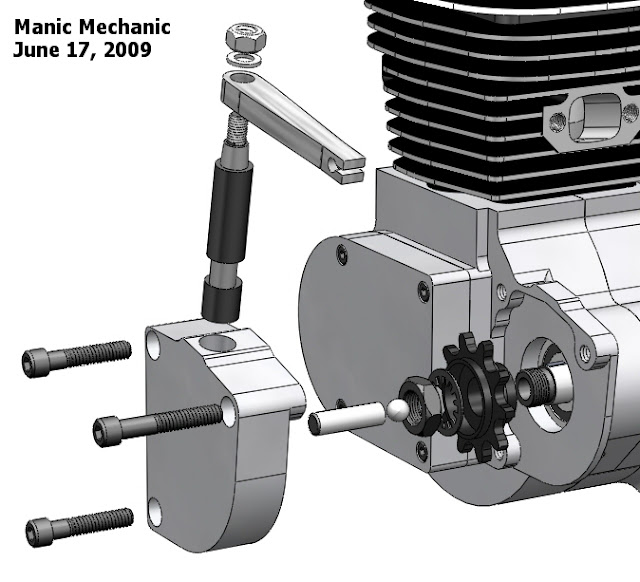My Four Stroke 7-G Review
March 2016 Update: Defective Carburetor
After only 40 minutes run-time my new HS motor was hard to start, coughing and sputtering like it had a plugged carburetor. Grounding spark plug against the head I spun the motor. A yellowish spark jumped the gap. Replacing the fuel filter and adjusting valves was no cure for hard starting. The oem HS carb has no idle mixture adjustment; its plugged by the factory to meet EPA rules. In desperation I ordered a brand new road spec HS carburetor from Dax.This wasn't all however. By March's end a new adjustable Ruixing carb arrived with the same fuel starvation problem. Starting only with the choke on even in warm weather proved to be very frustrating. No amount of rich idle mixture would help. The poorly designed Ruixing carburetor is barely okay for steady state running at mid throttle. It too quickly ran out of fuel after one - two minutes. One could fiddle with the float setting and increased idle speed with similar results; unplanned and early motor shutdown.
You'd think Huasheng would provide a higher quality carburetor designed for road use.
What to do?
Not stock for long. I brazed an extended manifold to a washer and fashioned my own intake. With a new Z manifold and NT Speed carb it now makes more low end power.
Due to a smaller fuel bowl there's a lopey idle and less smoothness. Trolling speeds are possible with a roll-on/off throttle hand.
The NT carb is a fuel increase only type carb (no idle air mix screw).
Half to 3/4 throttle brings a noticeable increase in torque and a big smile.
The best thing is it starts normally and runs!

Keep the carb level
Early Days: Initial Impressions
Gasbike's HS142-7G Ghost Racer MB Kit is just the thing if one is looking for a low stress, clean-running, 4 stroke package - or so I hoped.
At $239 shipped was a relatively economical purchase from the start.
Everything was there; fuel tank, throttle cable, controls, kill switch, black Huasheng 49cc motor, 415 chain, 44T sprocket, chain tensioner, wider pedals, V-mount, brackets, nuts & bolts, and a 7-G 100T belt drive transmission. A cheap white plastic fuel line is included. Forget using that one. I replaced it with heavy duty black fuel line.
Gasbike's recycled 4G PDF installation instructions are hopelessly out of date.
Watch their YouTube install video instead.
By extending the included v-motor mount all the way apart the HS motor will fit the long XL29 frame.
The plastic belt cover had to be shaved along its bottom edge to clear the crank pedals.
After filling up with fuel and oil the 49cc motor fired right up.
The centrifugal clutch engages at low speed so be ready to take off with just a blip of throttle.
Acceleration is moderately brisk and steady. The four stroke engine is quiet and well-behaved at all speeds.
With its 44T oem rear sprocket the little motor was revving away at 18-19 mph. It performs better with a 40T sprocket - gaining 20 mph+ speed while keeping the rpms down.
 |
| XL29 with Manic 40T rear sprocket |
Hand grips are small & hard. Throttle action is okay despite a plastic housing. Packaged hardware is second rate. I used a Manic Mechanic 40T CNC sprocket.
Though the HS motor has it's own box muffler it could use a traditional exhaust pipe, mostly for looks.
There's no lengthy break-in procedure and little operating drama (untrue).
I had rated the Gasbike 7G Ghost Racer kit a solid and semi-reliable performer at a decent price. Not now. See update above.
Be prepared to replace the stock carburetor. A rotary valve carburetor with primer bulb like those used on weed whackers would help a lot.
Suspension:
For safety and comfort on the road you'll need some form of springer fork.I ditched the rigid 29" fork and installed a spare 32mm MTB unit with 180mm disc adapter.
While any suspension is better than none a Monark springer fork ($149) would probably be more effective in smoothing out smaller bumps and holes.
 |
| OEM 29er fork was too rough |
 |
| Mountain bike fork. 32mm leg with 2" travel |
 |
| Monark Fork would be best |











































